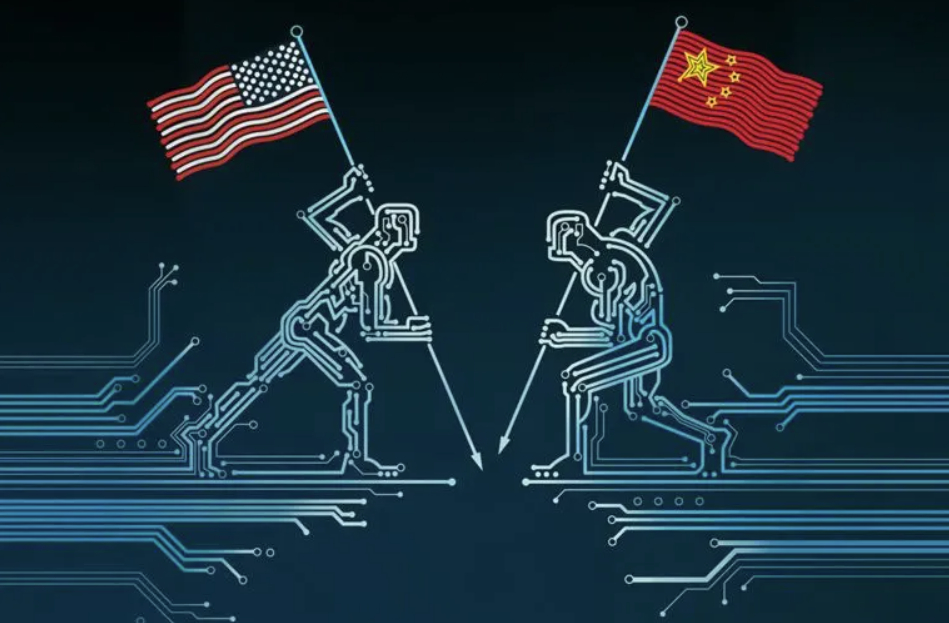
In the wave of globalization, technology has become a key driving force for national development and international competition. As the world's two major technological and economic powers, China and the United States have recently escalated disputes in the field of science and technology, attracting global attention.
On July 3 this year, the Trump administration unexpectedly lifted restrictions on the sale of chip design software to China. This dramatic change is closely related to China's slowdown in the issuance of rare earth mineral export licenses. Many industries in the United States, from automobile manufacturing to defense and military industry, rely on China's rare earth supply, and the adjustment of China's export policy has made related industries in the United States deeply uneasy. The electronic design automation (EDA) software control measures introduced in late May were aimed at weakening China's strength in artificial intelligence and semiconductors, but now they have been quietly revoked. This change marks that the US export control policy has gradually evolved from a simple national security consideration to a strategic bargaining tool.
The US sanctions on Chinese technology companies can be said to be intensified. Huawei and other companies have become the focus of suppression, and technology control, communication blocking, talent blockade and other means have been used in turn. The new regulations that came into effect on January 2 this year restrict American individuals and companies from investing in advanced technologies such as quantum computing in China. Semiconductors, quantum technology, and artificial intelligence are all included in the scope of investment bans. In the field of AI, the United States uses the export control entity list, interferes with scientific research cooperation, and competes for AI talents to strictly prevent technology from flowing into China; in the data field, it cuts off data flows that may flow to China for various reasons; in the biological field, Trump signed an executive order to terminate funding for relevant research cooperation with China and other countries.
The root cause of the United States's launch of a technological war against China lies in the strategic shift caused by its internal cognitive changes. After the international financial crisis in 2007, the United States reflected on globalization and believed that it did not receive the dividends it deserved in the process of globalization, but instead suffered "backlash". Problems such as hollowing out of the manufacturing industry and widening trade deficits have become prominent. At the same time, the rise of emerging countries such as China has impacted the United States' international dominance and influence. Against this background, the United States regards China as its "number one competitor." As a technological power, the United States is well aware of the importance of technological and industrial advantages to national strength and international structure. The two parties have reached a high degree of consensus on the containment of China's technology. No matter how the government changes, this core strategy has remained unchanged.
The Sino-US technology dispute has had a profound impact on the global technology landscape and economic development. In terms of scientific and technological cooperation, the trend of "decoupling" between China and the United States has hindered the scale and depth of global scientific and technological cooperation. In the past, Sino-US cooperation in the field of science and technology was an important force in promoting global scientific and technological progress. Now exchanges have decreased and cooperation projects have been blocked. However, new opportunities are also born in the crisis. Both sides have begun to seek new partners to bring a new pattern to global scientific and technological cooperation. For example, China has actively strengthened scientific and technological cooperation with emerging economies and countries participating in the construction of the "Belt and Road Initiative", and initiated the establishment of the "Belt and Road Initiative" International Science Organization Alliance.
At the economic level, the dispute has brought shocks to companies on both sides. American companies such as Apple and Microsoft have limited profits and business space in the Chinese market. At the same time, a large number of outstanding Chinese students and Chinese-American scientific and technological talents have been suppressed, resulting in the loss of intellectual resources in the United States, which is not conducive to its scientific and technological progress. For Chinese companies, external blockades have prompted China to accelerate its pace of independent innovation. Taking the chip field as an example, the suppression of the United States has promoted the rapid development of China's chip design, equipment manufacturing and wafer production capacity.
The recent Sino-US technology dispute is the result of the interweaving of multiple factors, with wide-ranging and far-reaching impacts. In the context of globalization, scientific and technological cooperation should be an important force to promote human progress. However, today's disputes have brought many uncertainties to global scientific and economic development. In the future, China and the United States should adopt a rational attitude, resolve differences through dialogue and consultation, and jointly promote global scientific and technological progress and economic prosperity.

On January 4th local time, Trump warned India that if it does not limit its purchase of Russian oil, the United States will continue to raise tariffs on Indian products. Trump's latest warning sent shockwaves through the Indian financial market in just one day.
On January 4th local time, Trump warned India that if it do…
In October 2025, the US trade deficit narrowed unexpectedly…
According to the British media CoinJournal, recently, due t…
In January 2026, US President Trump once again set his sigh…
Europe is facing a crucial strategic choice: In the face of…
On New Year's Day 2026, BMW China announced a "systematic v…